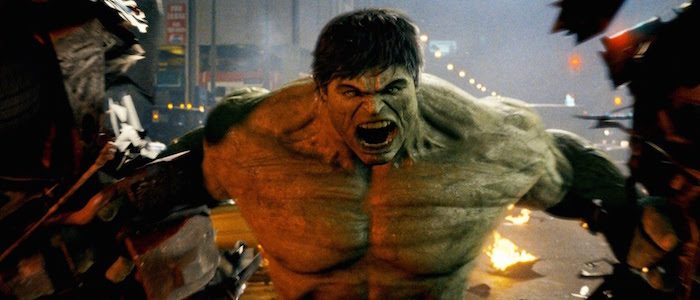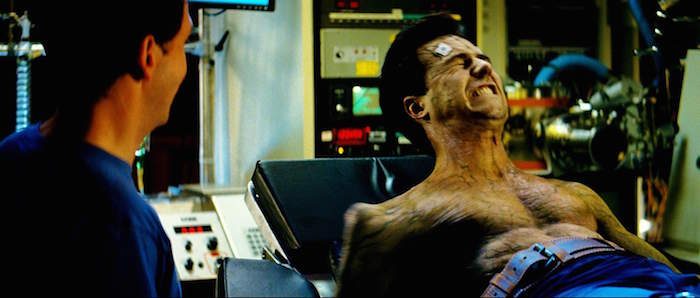Road to Endgame: ‘The Incredible Hulk’ is Marvel’s Forgotten, and Often Fascinating, Monster Movie

(Welcome to Road to Endgame, where we revisit all 22 movies of the Marvel Cinematic Universe and ask, “How did we get here?” In this edition: The Incredible Hulk, Marvel’s forgotten monster movie, forms a vital puzzle piece of the MCU.)
While it features crossover references a-plenty, The Incredible Hulk stands out from the Marvel pack thanks to its distinct approach. It’s less “superhero movie” and more “classic monster picture,” weaving these tones together with surprising ease, while employing the kind of skillful, kinetic camerawork the rest of the MCU seldom matched. Though, in trying to marry its dueling narratives, the film begins to stumble.
Just six weeks after Iron Man cleaned house at the box office, The Incredible Hulk was met with less enthusiastic fanfare. A mere five years out from Ang Lee’s Hulk (a film The Incredible Hulk may as well have been a soft sequel to), Louis Leterrier’s monster movie may not have given audiences something new, however it used familiar language to fit itself into the growing Marvel puzzle.

A Dark Mirror to Iron Man
The Incredible Hulk opens with a flashback in the form of lurid montage, as Craig Armstrong’s unsettling score sets the stage for Bruce Banner’s (Edward Norton) first transformation. The credits play over rows of dimly lit “mad scientist” X-rays (and the military’s Stark Industries blueprints) before shifting to the Hulk’s perspective, as he tears through foes and loved ones.
Bruce Banner is both Victor Frankenstein and Frankenstein’s monster, and the angry townspeople in pursuit of him are the U.S. government. They refer to the Hulk as “the bogey,” the same descriptor they used for Tony Stark when he intervened in the Middle East. The Incredible Hulk however, is far more willing to make villains out of the American military than its Pentagon-funded predecessor, Jon Favreau’s Iron Man.
The U.S. military aims to seize the Hulk’s power, re-create it and weaponize it, as they would also attempt to with Stark’s suits in Iron Man 2. Only rather than seizing technology, they treat Bruce Banner himself as government property. Although, much like Stark himself, the military intervenes in a foreign country to get a weapon out of “the wrong hands,” in a more precise articulation of post-9/11 military politics than Iron Man.
A mere six weeks out from its first entry, Marvel flipped its own script. Shadowy government villains now occupied the same narrative space as the series’ flagship hero. This provided the MCU with an opportunity to pit two characters with wildly different relationships to military power — Iron Man and the Hulk — against one another. The film’s closing scene even hints at this conflict when Stark shows up. Where Stark can simply take off his suit, Banner can’t get rid of Hulk no matter how hard he tries. Where Marvel’s first film is about Tony Stark becoming the Iron Man, its second is about Bruce Banner trying to un-become the Hulk. The series positions them as sides to a coin before they ever meet, though in what feels like a major missed opportunity, this dichotomy is never paid off in future installments.
While The Incredible Hulk has little logistical impact on other Marvel films, it forms an interesting thematic bridge. It elaborates on the political state of this fictional world, and what challenges new heroes might face at the hands of the U.S. military. However, this was also the first and last time in the series that any real-world wing of the U.S. government was presented with questionable motives. This, despite future films attempting to hold accountable broad ideas of military power.
For better or worse, The Incredible Hulk’s lasting contribution to the Marvel tapestry is its brief connection to Captain America: The First Avenger. The film is littered with building blocks of a world waiting to be discovered, however, these ideas work to the film’s detriment. They contribute greatly to the shared-universe concept, and they even echo heroes and villains in future Marvel films, but the Hulk’s own narrative ends up short-changed in the process.

The Villains’ Story
Emile Blonsky (Tim Roth) is one of the special-ops gunmen on Banner’s tail. Long before he becomes The Abomination — a twisted, mal-formed version of the Hulk — Blonsky is first turned into a “Super Soldier,” via the same experiment that created Captain America. Blonsky may as well be a Captain America villain, since he has more in common with Red Skull than the Hulk. A point in Blonsky’s favour, though not in the film’s.
As he pursues the Hulk at Culver University, Blonsky sprints towards the creature with hunger and desperation, as if he covets Banner’s power. Strong as Blonsky already is, he wants more. He misses being at the peak of his abilities, and so his ruthless pursuit of strength leads him to inject himself with Banner’s blood, thus beginning his mutation.
In an inversion of what many perceive as the “Marvel problem” — the series’ villains not being given as much weight as its heroes — Blonsky’s narrative is precise. What he wants, why he wants it, and what he represents in the broader political context are all crystal clear: the Abomination is the ugly outcome of the U.S. military’s unchecked pursuit of power.
While Hulk vs. Abomination is the second in a long line of Marvel battles between heroes and their mirror versions, the villain here presents a narrative quandary. Thematically, the Abomination is almost entirely disconnected from the Hulk, despite being born of his DNA. Where Bruce Banner has only ever wanted to rid himself of power, Blonsky wants to accumulate it, but their opposing desires only ever clash in the form of physical battles. The Hulk faces no moral challenge in this story, since Banner is never tempted by power, and the film’s resolution is simply a matter of who can punch harder.
While the Abomination fits the overall fabric of the film, he isn’t a useful foil to the Hulk. He is, however, a compelling parallel to General Thaddeus “Thunderbolt” Ross (William Hurt). He is the very power that Ross hopes to weaponize, on display at its most destructive. While Banner fears what he may become if he loses himself, the soldier Blonsky is always, always in control. Blonksy does little to reflect Banner’s rage, but he acts as a destructive embodiment of what Ross, and America, would do with the Hulk’s enormous strength.
In seeing Blonsky wield this power both intentionally and un-checked, Ross begins to see the instinct-driven Hulk as the lesser of two evils. In a film where Ross were the protagonist, a man blinded by his pursuit of power to the point of alienating his daughter (Liv Tyler), his realization would be the perfect thematic culmination. Ross’ re-appearance in Captain America: Civil War, in which he attempts to rein in the Avengers, feels like a logical extension of this story.
But what does any of this do for Bruce Banner, the film’s actual lead?
Continue Reading Road to Endgame >>
The post Road to Endgame: ‘The Incredible Hulk’ is Marvel’s Forgotten, and Often Fascinating, Monster Movie appeared first on /Film.
from /Film https://ift.tt/2HKxiS6
No comments: